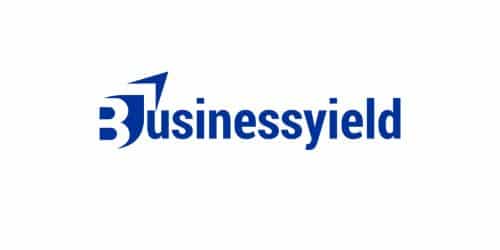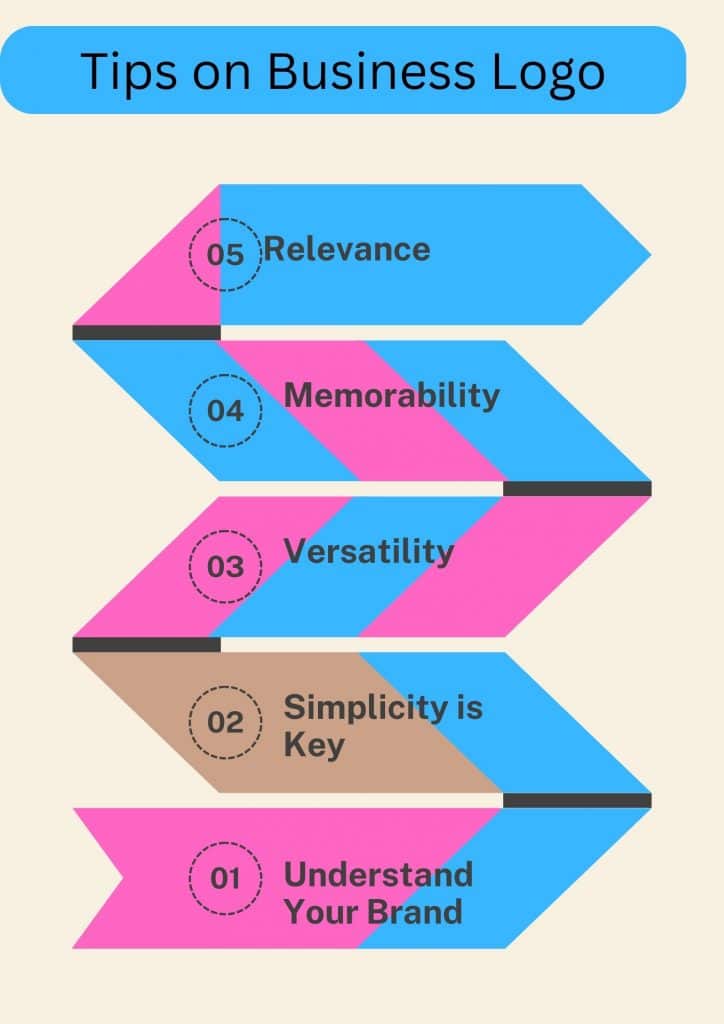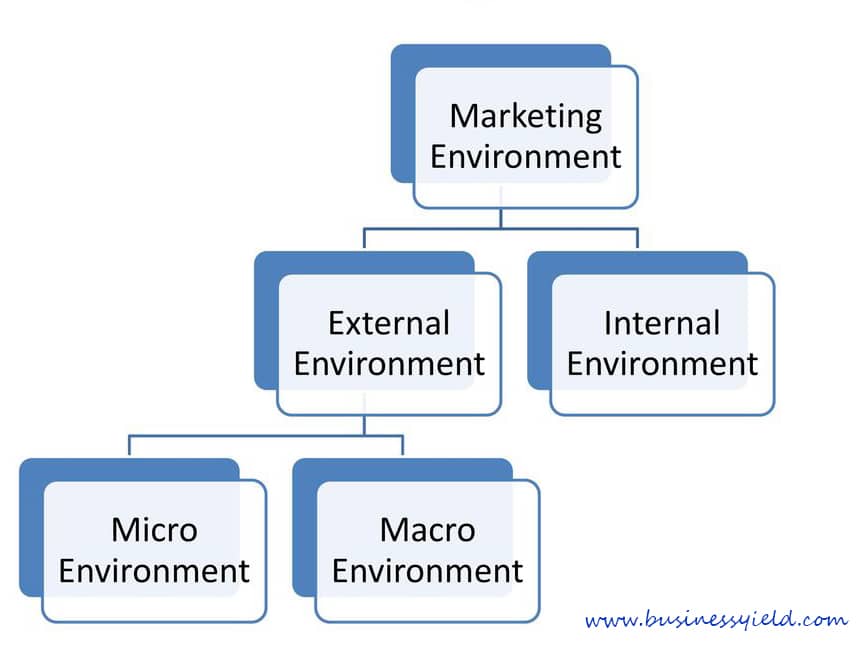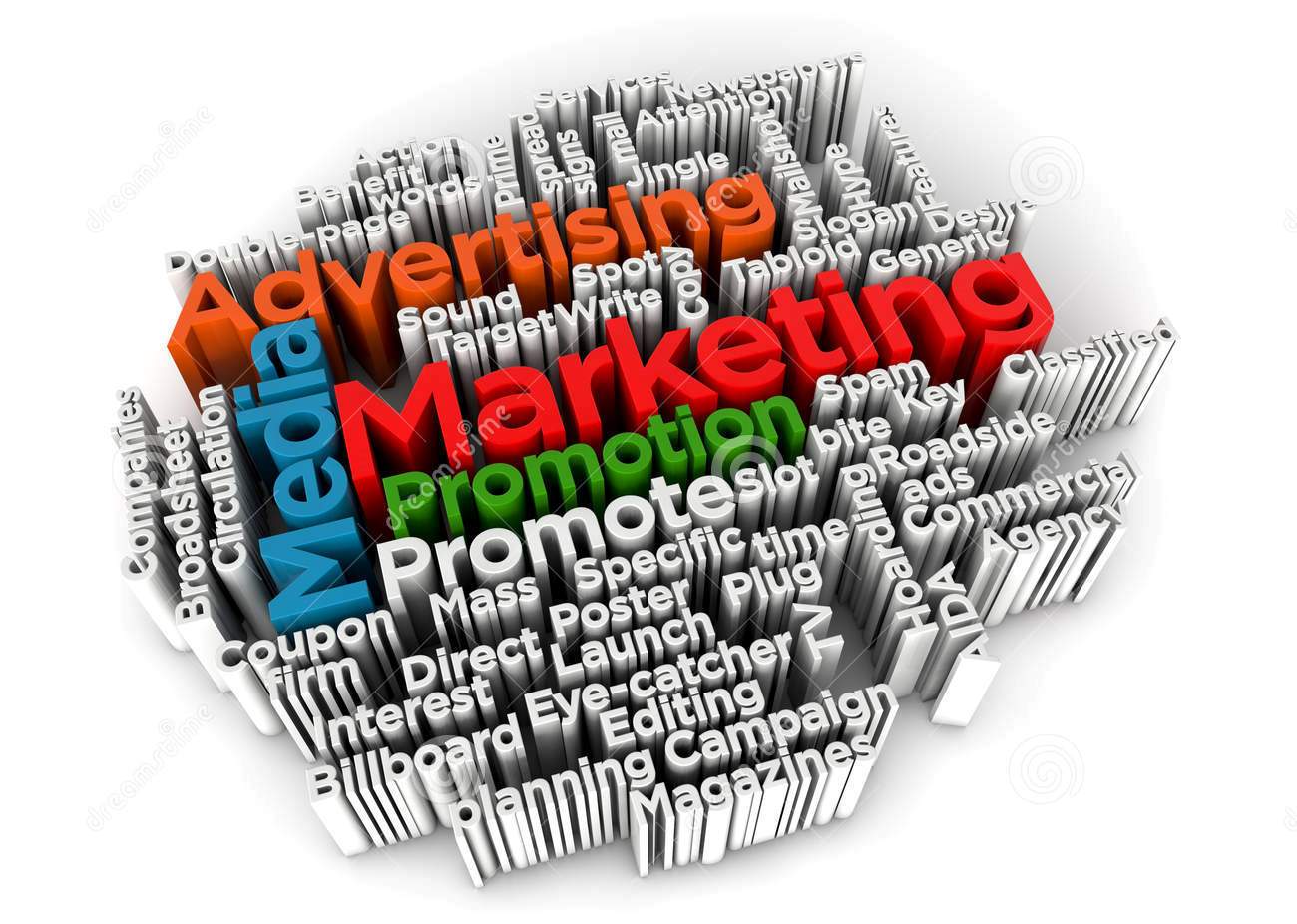As a business professional, I understand how important and influential a logo is in developing a brand identity. A well-designed business logo is essential for creating a distinctive and impactful presence. Whether looking for a business logo online or considering a complete design, the appropriate visual representation can help boost brand recognition and success. I will explain more about what a business logo is and how important it can be for your business. Let’s get started.
Key Points
- The Business logo involves clarity. The logo’s message is essential; it should reflect the company’s identity, values, and purpose.
- Simplicity is another crucial aspect; a clean, uncomplicated design is more memorable and versatile.
- Consideration of colour psychology is important, as different colours evoke specific emotions and associations.
- Scalability is vital; a logo should maintain clarity and impact, whether on a small business card or a large billboard. Lastly, the logo should be timeless, avoiding trendy elements that may quickly become outdated, ensuring its longevity and relevance for the business.
What is a logo?

A logo is a visual symbol that represents a company, brand, or product, serving as a distinctive identifier. It embodies the essence of an organization, conveying its values, mission, and identity to the audience. Logos are crucial for brand recognition, fostering a strong connection between the business and its customers. They often contain unique graphic elements, typography, and colors carefully chosen to evoke specific emotions or associations.
A well-designed logo like the Businessyield Consult logo in a crowded marketplace can set a brand apart, making it memorable and instantly recognizable. A logo is a powerful tool for establishing and maintaining a brand’s visual identity, whether displayed on a website, packaging, or advertising materials.
Business Logo Online
In the digital world, a well-designed logo serves as a virtual brand ambassador, providing immediate recognition and building trust among online audiences. Crafting a business logo online involves unique considerations, such as optimizing for various screen sizes and ensuring compatibility across digital platforms. The logo is a visual handshake in the vast online landscape, leaving a lasting impression and enhancing overall brand visibility.
In the busy online business world, most logos I encountered serve as a virtual representation of brand identity. It involves a thoughtful blend of visual elements embodying some companies’ values and missions. Through the digital lens, the logo becomes a vital ambassador, creating an immediate connection with online audiences and fostering trust.
Guiding the online landscape, most logos adapt seamlessly to diverse screen sizes, ensuring a consistent and impactful presence. It acts as a brand’s virtual handshake, leaving a lasting impression on visitors and enhancing overall visibility across various digital platforms.
Check out our article on How Important Is Online Branding?
Business Logo Design
In my experience with logo design, I’ve discovered that developing a business logo necessitates a thorough understanding of the brand’s identity. I begin by conducting extensive research and participating in brainstorming meetings to lay the groundwork for picking critical features that align with the company’s values and target audience.
Once the conceptual foundation is established, the design phase begins, combining creativity and strategic thinking. I carefully selected the typeface, color palette, and visual components to reflect the brand’s identity. Iterative refining is used throughout the process, with feedback loops essential in ensuring that the logo blends seamlessly into the brand’s narrative.
Finally, a great business logo design visually represents the company’s essence, making it identifiable and memorable in a competitive business environment.
What Is the Difference Between a Business Name and a Business Logo?
The business name is the title or designation under which a company operates and is legally recognized. It’s the official moniker in legal documents, contracts, and formal communication. On the other hand, a business logo is a visual symbol that represents the business. It is a graphical element designed to create instant brand recognition and is often associated with the business name.
While the business name is a textual representation, the logo is a visual representation that may incorporate text, symbols, or a combination of both. The business name is static and doesn’t change, but a business may update or modify its logo over time to stay relevant or reflect changes in branding strategy. In summary, the business name is the verbal identifier, while the business logo is the visual emblem that complements and enhances brand identity.
If you wish to know more about Business Name, HOW TO COME UP WITH A BUSINESS NAME: covers everything you’ll need.
The Importance of a Business Logo?
A business logo holds multifaceted significance, starting with its role as a visual representation of the brand’s identity. Initially, it acts as a brief and memorable introduction, conveying the essence of the business and forming a lasting first impression.
#1. Brand Recognition
A business logo is the foundation of brand identification. It captures the spirit of a business in a visually appealing style, allowing people to recognize and associate it with a specific product or service. Consistent exposure to the logo builds brand recall over time, making it a valuable tool for firms.
#2. Professionalism
A properly created logo conveys a sense of competence and reliability. It communicates to potential clients that the company is serious about its image and dedicated to providing excellence. A professional logo establishes the tone for positive customer views, instilling confidence and trustworthiness in consumers.
#3. First Impression
As the initial point of contact between a business and its audience, a logo creates a lasting first impression. An aesthetically pleasing and well-crafted logo captures attention and establishes an emotional connection, influencing how customers perceive the brand from the outset.
#4. Differentiation
In a saturated market, standing out is essential. A unique and distinctive logo helps a business carve its niche by differentiating itself from competitors. This distinctiveness aids in creating a memorable brand identity, making it easier for customers to choose one brand over another.
#5. Memorability
A memorable logo is a powerful marketing tool. Its simplicity and uniqueness make it easier for consumers to recall the brand when purchasing. Memorable logos contribute to establishing brand loyalty as customers repeatedly encounter and remember the company’s visual representation.
#6. Consistency Across Platforms
Maintaining consistency in branding elements, especially logos, is crucial across various platforms. A uniform logo reinforces brand identity on a business website, social media, or printed materials. Consistency fosters a sense of reliability, professionalism, and coherence, strengthening the overall brand image.
#7. Marketing and Advertising
Logos are pivotal in marketing and advertising campaigns. They serve as a visual anchor, tying together different promotional materials and strategies. A well-designed logo enhances the effectiveness of marketing efforts, creating a cohesive and recognizable brand presence in the marketplace.
#8. Scalability
A logo’s versatility ensures its effectiveness across different mediums and sizes. A scalable logo retains its visual appeal and recognizability from small business cards to giant billboards. This adaptability allows businesses to maintain a cohesive brand image across various platforms and marketing materials.
#9. Trust and Credibility
Trust is a fundamental factor in customer relationships, and a professionally designed logo contributes to building that trust. It signals to consumers that the business is established, reliable, and invested in maintaining a solid and consistent brand presence, fostering a sense of credibility.
#10. Global Recognition
In an interconnected global marketplace, a logo is a universal language for brand identification. It transcends linguistic and cultural barriers, enabling businesses to communicate with a diverse audience. A globally recognized logo facilitates brand awareness and establishes a presence in various markets, contributing to the overall success and growth of the business.

Different Types of Business Logos
#1. Wordmark or Logotype
A wordmark or logotype relies solely on the company’s name or initials, emphasizing distinctive typography. This approach enhances brand recall by associating the visual style of the letters with the brand identity. Examples like Coca-Cola and Google showcase the power of unique lettering to create an instantly recognizable logo.

Credit:Visme
#2. Lettermark
The Lettermark logo condenses the brand’s identity into its initials or acronym. This condensed form benefits companies with long names, providing a concise and memorable representation. IBM and HBO effectively utilize lettermark logos, simplifying brand identification and facilitating quick recognition.
#3. Icon or Symbol
The icon or symbol logo relies on a unique graphic or symbol without incorporating text. This approach aims to create a visual representation that can be universally recognized, transcending language barriers. Examples like Nike’s swoosh and Apple’s apple demonstrate how a well-crafted symbol can become synonymous with a brand.
#4. Combination Mark
A Combination Mark seamlessly integrates text and a symbol, offering versatility in communication. This type of logo ensures that the brand name is visually associated with a distinctive symbol. Brands like Burger King and Adidas employ combination marks, leveraging the strengths of both elements for enhanced brand recognition.
#5. Emblem
Emblems encapsulate the company name within a symbol, often in a badge-like design. This creates a unified and cohesive representation of the brand. Notable examples include Harley-Davidson and Starbucks, where the emblematic design reinforces a sense of tradition and reliability.

Credit: Freepik
#6. Abstract Logo
Abstract logos employ non-literal shapes, lines, or forms to convey a concept or representation. This allows for creative interpretation and a unique visual language. Pepsi’s globe and Adidas’ abstract triangle showcase how these logos evoke feelings and associations without being explicitly representational.
#7. Mascot
Mascot logos feature a character or figure, often anthropomorphic, that becomes the face of the brand. These characters create a friendly and approachable image, contributing to a brand’s personality. The Michelin Man and KFC’s Colonel Sanders exemplify the use of mascots to establish a distinctive brand persona.
#8. Responsive Logo
Responsive logos are designed to adapt seamlessly across various devices and screen sizes, ensuring consistent visibility in the digital landscape. These logos prioritize flexibility, maintaining clarity and impact regardless of the platform or device. Responsive design has become increasingly crucial as digital interactions become more diverse.
#9. Monogram
Logos consist of stylized letters or initials creatively combined to form a single, unique symbol. These logos often exude a sense of sophistication and elegance. Brands like Louis Vuitton and Chanel use monograms to create a visually appealing and distinctive representation of their names.
#10. Brand Mark
Brand mark logos, similar to symbols, represent the brand without directly referencing the product or service. These logos aim to create a strong visual identity that transcends specific offerings. Twitter’s bird and Target’s bullseye are iconic brand marks that instantly evoke the associated companies without explicit references.
How to Create a Business Logo Free Online
Creating your business logo for free online involves a step-by-step process, and there are user-friendly tools that can assist you. Here’s a personalized guide:
#1. Understand Your Brand
Understanding your brand is paramount. Firstly, define values, a mission, and unique selling points. Consider the personality you want to project, whether modern or traditional. Additionally, identify your target audience demographics.
#2. Research Your Industry
Researching your industry lays the foundation for a successful logo. Analyze competitors’ logos, understanding design trends prevalent in your specific sector. Delve into common themes, color schemes, and styles to understand what effectively captures the audience’s attention.
#3. Define Key Elements
Defining key elements involves crucial decisions about your logo’s core components. Decide whether your logo will be primarily text-based, symbol-based, or a combination of both. This step establishes the fundamental visual identity of your brand across various platforms.
#4. Sketch Ideas
Sketching ideas is the creative process where concepts come to life. Experiment with different layouts, shapes, and styles. These initial sketches are the raw material for refining and evolving your logo design throughout the creative process.
#5. Simplicity is Key
The principle of simplicity is foundational. Strive for a design that is easily recognizable and memorable. Avoid unnecessary complexity, ensuring your logo conveys its message clearly and succinctly across diverse mediums.
#6. Versatility
Versatility is crucial for a logo’s success. Ensure your design works well in various sizes, from small icons to large banners. This adaptability ensures consistent and compelling representation across different applications and platforms.
#7. Typography
Typography plays a significant role if your logo includes text. Choose a font that aligns with your brand personality, ensuring readability and visual harmony with other design elements.
#8. Color Selection
Color selection involves strategic choices that reflect your brand identity. Choose colors that evoke the desired emotions and resonate with your target audience. Consider the psychological impact of colors on perception and brand association.
#9. Test on Different Backgrounds
Testing your logo on different backgrounds is essential. Ensure visibility and maintain a strong visual impact on light, dark, and colored backgrounds. This step helps guarantee that your logo maintains its integrity across diverse environments.
#10. Get Feedback
Getting feedback is a critical part of the design process. Share your logo designs with colleagues, friends, and potential customers. Collect constructive feedback to understand how your logo is perceived and make necessary adjustments.
#11. Refinement
Refinement is an iterative process. Based on feedback and your assessments, fine-tune details, proportions, and overall aesthetics. Continuously refine your design to achieve the desired visual impact and alignment with your brand identity.
#12. Create Digital Versions
Creating digital versions involves using graphic design software to convert your concept into a professional, scalable format. Save your logo in various file formats suitable for web, print, and other applications, ensuring optimal quality and versatility.
#13. Trademark Search
Conducting a trademark search is a legal necessity. Ensure your logo is unique and doesn’t infringe on existing trademarks. This step mitigates the risk of legal issues and ensures the exclusivity of your brand representation.
#14. Finalize and Implement
Finalizing your logo marks the conclusion of the creative process. Implement it consistently across brand materials, including business cards, websites, and social media profiles. Maintain a unified and recognizable brand presence.
#15. Adaptability
Adaptability is an ongoing consideration. Ensure your logo seamlessly fits different mediums, sizes, and contexts while retaining its visual impact. Regularly assess and update if needed, ensuring your logo remains relevant and effective in a dynamic market.
Remember, the logo design process is a creative journey, and it’s okay to go through multiple iterations before arriving at the final design that truly represents your brand.
Checklist-on-How-You-Can-Design-a-Logo-for-Your-Business
While creating your logo online for free is accessible, ensure the design aligns with your brand identity and is unique. Be aware of any limitations on free platforms and consider investing in professional design services as your business grows and requires a more sophisticated logo.
- VISUAL DESIGNER: Meaning, What They Do, Salary, Software & Difference
- EMPLOYEE RECOGNITION PROGRAMS: Meaning, Ideas, Examples & Steps to Build an Effective One
- HOW TO CREATE A BRAND 2023 Guide (+ Free Tips)






